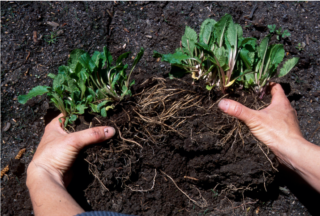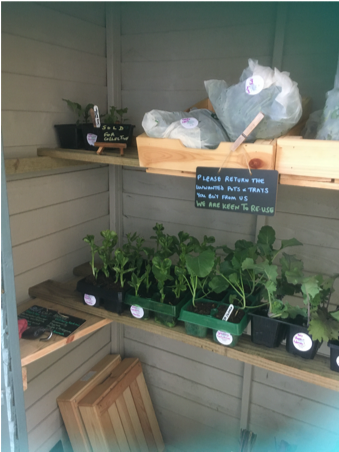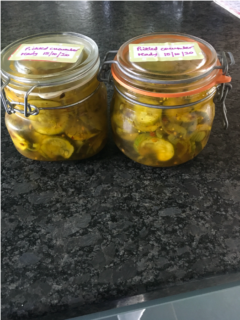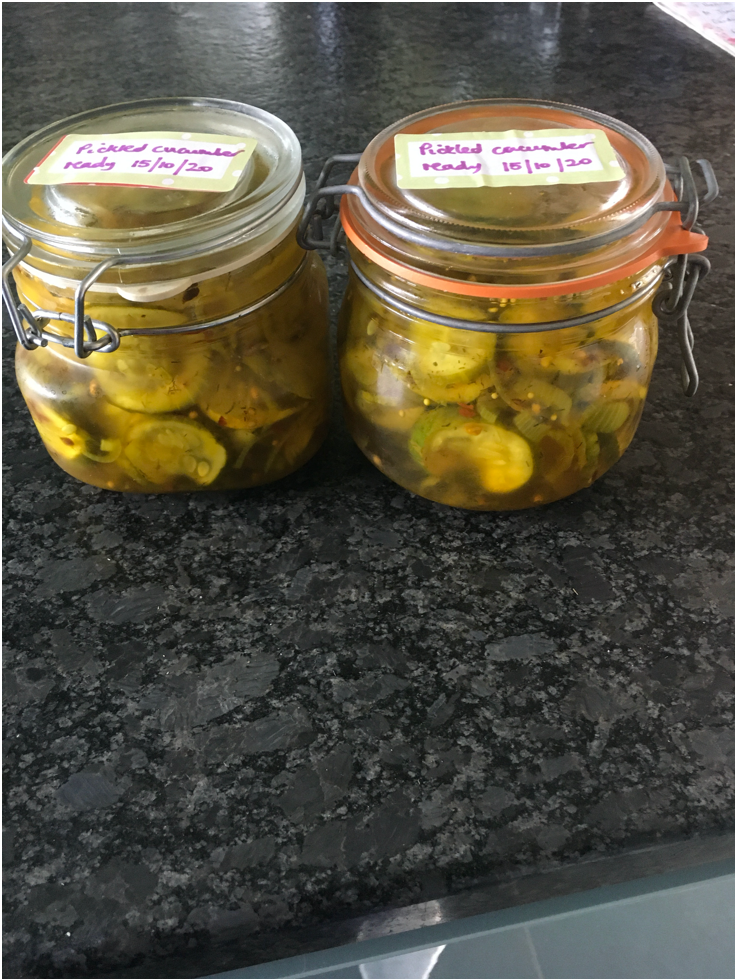
Although it remains mild at the moment, summer is most definitely in the past for this year. Without the Autumn Shows that usually mark the transition from summer to autumn, we all feel, us included, a bit discombobulated. It’s a bit like being in a part of the world where there are no seasons.
Gardeners, weep ye not though, as there are plenty of things to be done which are positive nods to the future in these troubled and troublesome times. All sorts can be done now while the soil and air are still warm. We’ve caught up with some overdue rainfall in the last couple of weeks , but still, all the gardening suggestions below should be caveated with “and water in well until established”, as this is the time for tops of plants to slow down, and the root development to be key.
This is a great time of year to be dividing clumps of herbaceous perennials, moving stuff, digging up seedlings to replant elsewhere or give away, and planting shrubs and trees. We are lucky down here in that we can get ahead of the rest of the country with these jobs, many areas of which have to wait until Spring.
You can be reasonably brutal in dividing herbaceous perennials (these are the ones which die down to nothing over winter, then reappear refreshed in the spring). The best way to do it is to dig up the whole clump, then chop or fork it into smaller clumps, cut off all the top growth to encourage the plant to focus on root development, and replant the healthiest part where you remove it from. Generally, because herbaceous perennials spread from the centre out, the oldest, most tired growth will be in the middle of the clump, so I would generally recommend discarding this.
The exception to this rule is grasses, whether herbaceous or evergreen. Grasses simply sulk and likely die if you divide them now. Their root establishment is simply not strong enough over the remaining warmer period to defend themselves against winter wet. Leave those until late Spring, but exactly the same principles apply otherwise.

Planting veg and flowers (seeds or plants) at this time of year may seem completely wrong, but as long as it’s the right type of things, it really isn’t. Now’s the time to get in the ground all those brassicas and greens you are going to be eating in spring. They are completely winter hardy, and actually prefer the cooler weather, especially now that most (but not all) the s******g cabbage white butterflies and their b****y caterpillars have died off. You can pick small leaves from these as they are growing for lovely tender autumn greens too. Winter spinach and beet crops are powerhouses of nutrition over the winter too – perpetual spinach is a beet, despite its name, as is rainbow chard in it’s various colours. Broad beans are good to plant in autumn too, but watch for mice. They just don’t form bulbs.
Winter salads rocket off at this time of year, but remember to choose those varieties that do better in the colder months. The clue is usually in the name. And all the spicy Asian leaves do tremendously well.
On the flower front, you will find plants of Sweet Williams, wallflowers and foxgloves readily available. These will overwinter and flower next spring. The hardy annuals you can sow now include larkspur, cornflowers, nigella (love in a mist), marigolds and so on. Shamefully, I will not have to sow any of these as I was sloppy about clearing away old seed heads and they have diligently sown themselves.
This is also the time to get in trees, evergreen hedging and shrubs (subject especially to the watering caveat) and similarly to move any you find to be in the wrong place (provided they haven’t got too big). Most garden centres are getting their new season stock in now, provides that the evil COVID has allowed the growers to function relatively normally over the last couple of months. Trees tend to be grown in the ground, lifted and put in pots, and only when established in their pots will they be sent out to garden centres. Growers will be reluctant to lift in very dry weather so that sets the whole process back a bit. Better they are a bit later and in good condition, than earlier and with weak root systems. They will struggle to establish otherwise.
It’s a great time to get your spring flowering bulbs in too – daffs, crocus, grape hyacinth and so on, are all widely available now. Tulips are too, but hold off planting them until November. They don’t like the warmth and may become diseased and mutated as a result.
 And don’t forget to process your crops. It is a shame to grow all this lovely produce and then waste it. I even made some rose petal jelly this week, and it is delicious. Costs only the sugar, a bit of lemon juice, and your time. And with a kitchen full of apples, I’ll be rooting out my chutney recipes later. What better occupation for a wet afternoon? If you don’t have time to process it, give it to someone who will.
And don’t forget to process your crops. It is a shame to grow all this lovely produce and then waste it. I even made some rose petal jelly this week, and it is delicious. Costs only the sugar, a bit of lemon juice, and your time. And with a kitchen full of apples, I’ll be rooting out my chutney recipes later. What better occupation for a wet afternoon? If you don’t have time to process it, give it to someone who will.
So, that should keep you busy. Do enjoy the last hurrah of the summer flowers though, and remember as the nights close in, that the reason we are able to grow the range of plants, flowers and foods that we do is because we have these changing seasons, and that change is to be embraced, not regretted.
Helen Robins
Calendra Collective
Calendracollective@outlook.com

